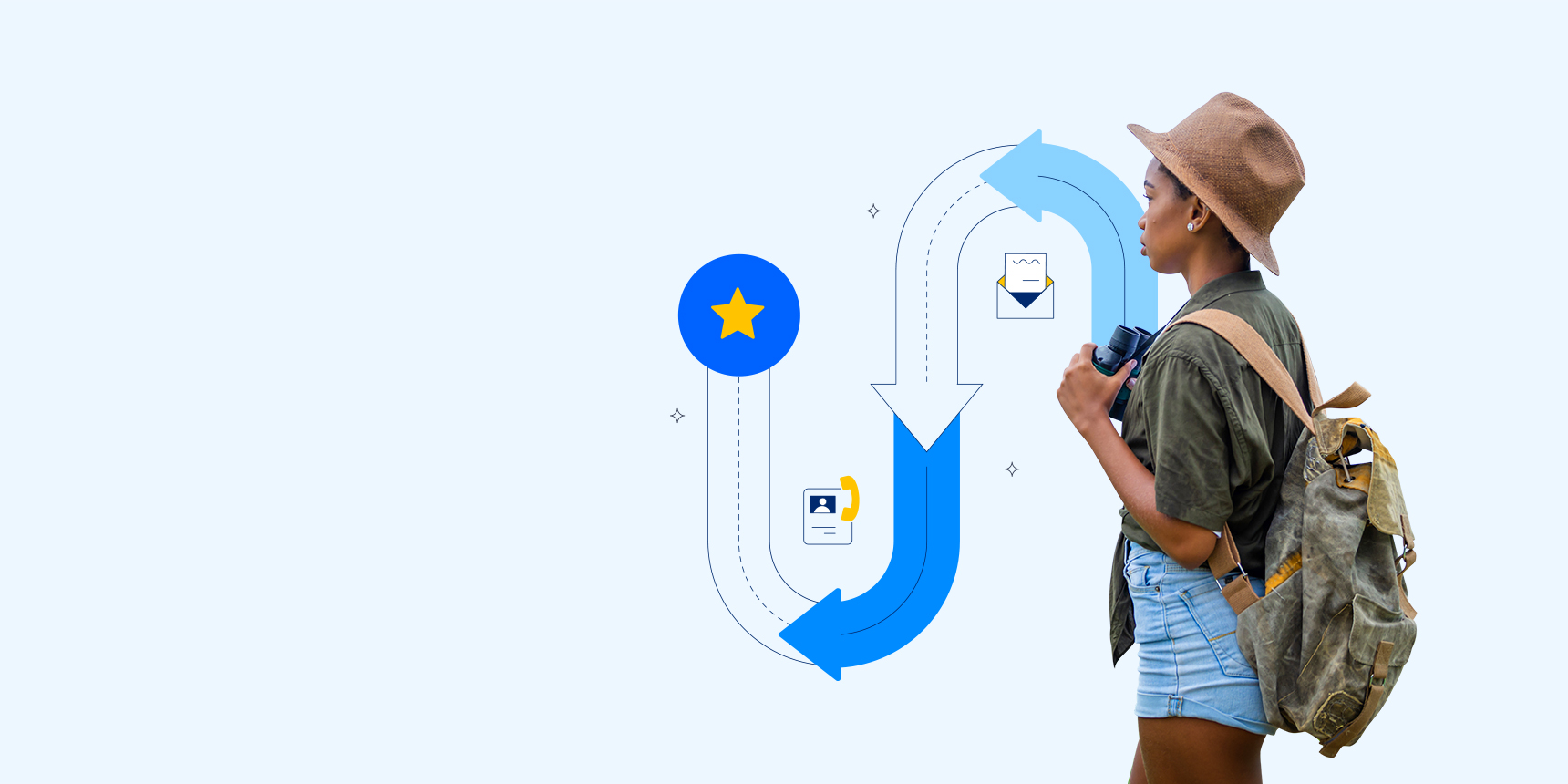How to build the most effective customer journey

In research recently published by McKinsey, taking a broad and systematic approach to the customer journey was found to increase customer satisfaction as much as 10%. Another study, by Boston Consulting Group, found that companies able to significantly rethink and modernize their customer journey reduced costs by up to 25% and achieved margins 15% better than average.
In a market that’s more turbulent and competitive by the day, these kinds of improvements can keep a struggling company afloat and turn a good performer into a market leader. But how can you improve your customer journey?
The key is effective customer-journey analysis, mapping and planning. Using data from your CRM and other sources, you can optimize your customer journey, reducing leakage, cutting bounce rates, increasing satisfaction and boosting conversion rates.
Here are Zoho’s top tips for effective customer-journey planning and optimization:
1. Map your customer journey: put pen to paper, literally or digitally, visualizing every touchpoint, how they connect with each other and how customers move through them.
2. Segment your customers by journey: who are your customers and how are different customer demographics moving through your touchpoints differently?
3. Identify weak points: where are customers bouncing, where are they exiting without converting, and how does this differ according to segment?
4. Set objectives: once you know who’s bouncing and where customer satisfaction is low, set objectives to use to plan an improved customer journey.
5. Map your optimized customer journey(s): using customer-journey planning tools, map new — optimized, flexible and effective — customer journeys.
6. Optimize each touchpoint: use the data from step 3 to make each touchpoint — email, telephone, social media, apps or something else — as efficient as possible.
7. Build personalized messaging: use your CRM and other backend systems to create and deliver bespoke messaging for each customer at each touchpoint.
8. Analyze and refine: use data from your CRM to continually analyze both real-time signals and long-term trends — and then to respond accordingly.
Your goal is to have total oversight of every touch point but also of your customers’ journeys through those touchpoints, both in real time and over the longer term. With the right systems, you can use this data to spot the weak points in your customer journey — and these can change over time, so dynamism is important — and then to fix them, rapidly, plugging leaks, preventing bounces and maximizing customer satisfaction.
Your customer relationship management (CRM) software should have the data intelligence and the tools to help you do this. With Zoho CRM, you can use the visual journey planner to quickly and easily plan optimal customer journeys and then implement those journeys, from within the CRM, across all channels and touchpoints.
As you segment based on customer behaviour, Zoho CRM allows you take an existing customer journey as a template but customize it for each new segment. It also allows you to collate and analyze data from all touchpoints, so that you can identify opportunities for optimization instantly, giving you the flexibility you need to stay ahead of your competitors.
Since the pandemic, how customers prefer to engage with companies has been evolving rapidly. And this change shows no signs of slowing down any time soon. To win in such a dynamic and shifting market, you need to understand your customer journeys in detail and to be able to respond to them intelligently and at speed.
That’s exactly what Zoho CRM allows you to do. Find out how Zoho CRM can help you stay ahead of your competitors and achieve your business goals.
